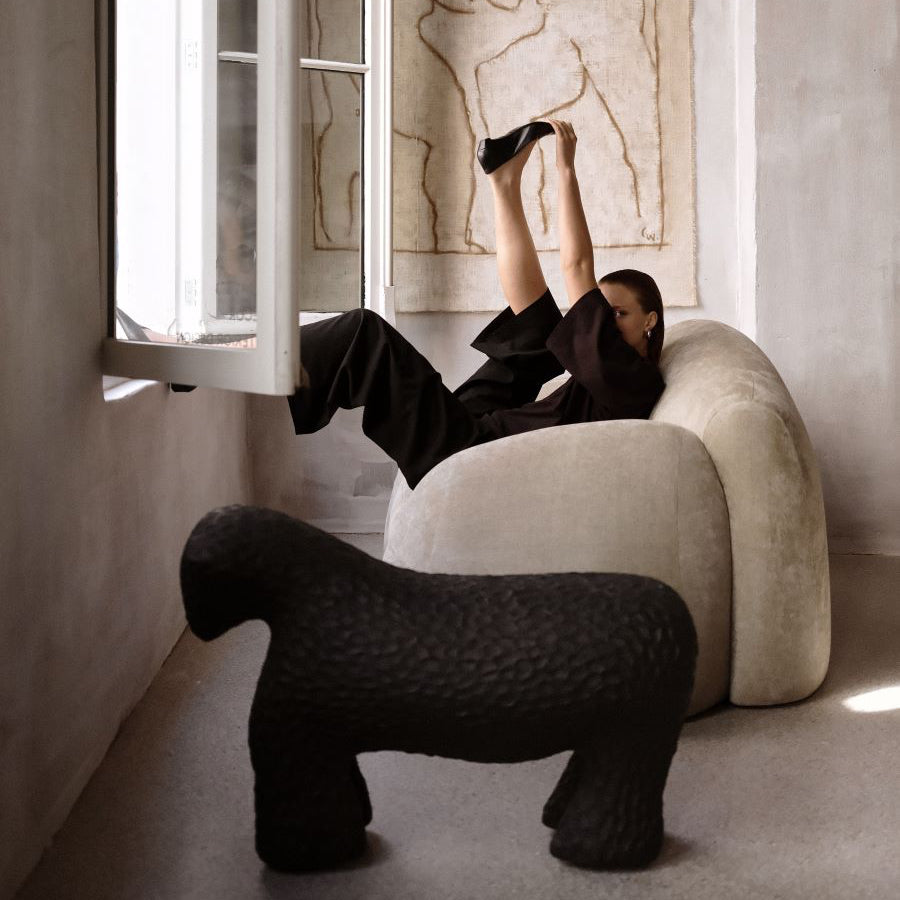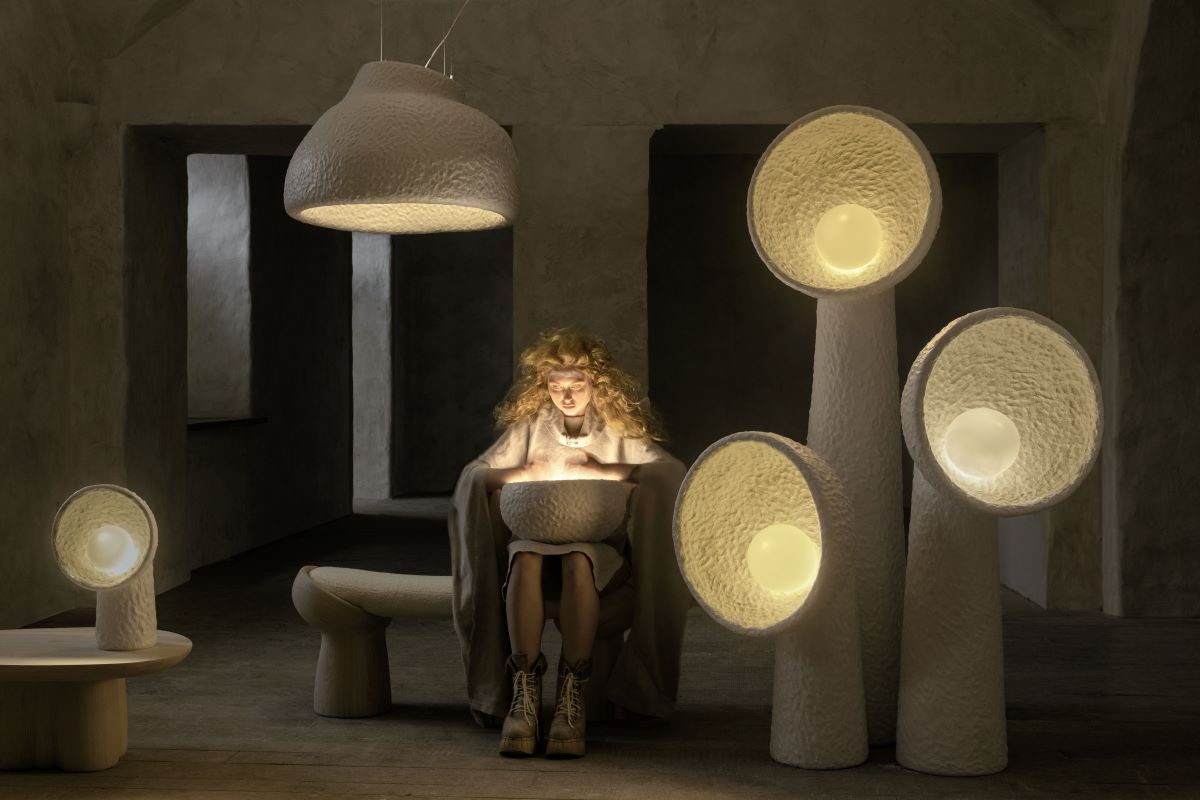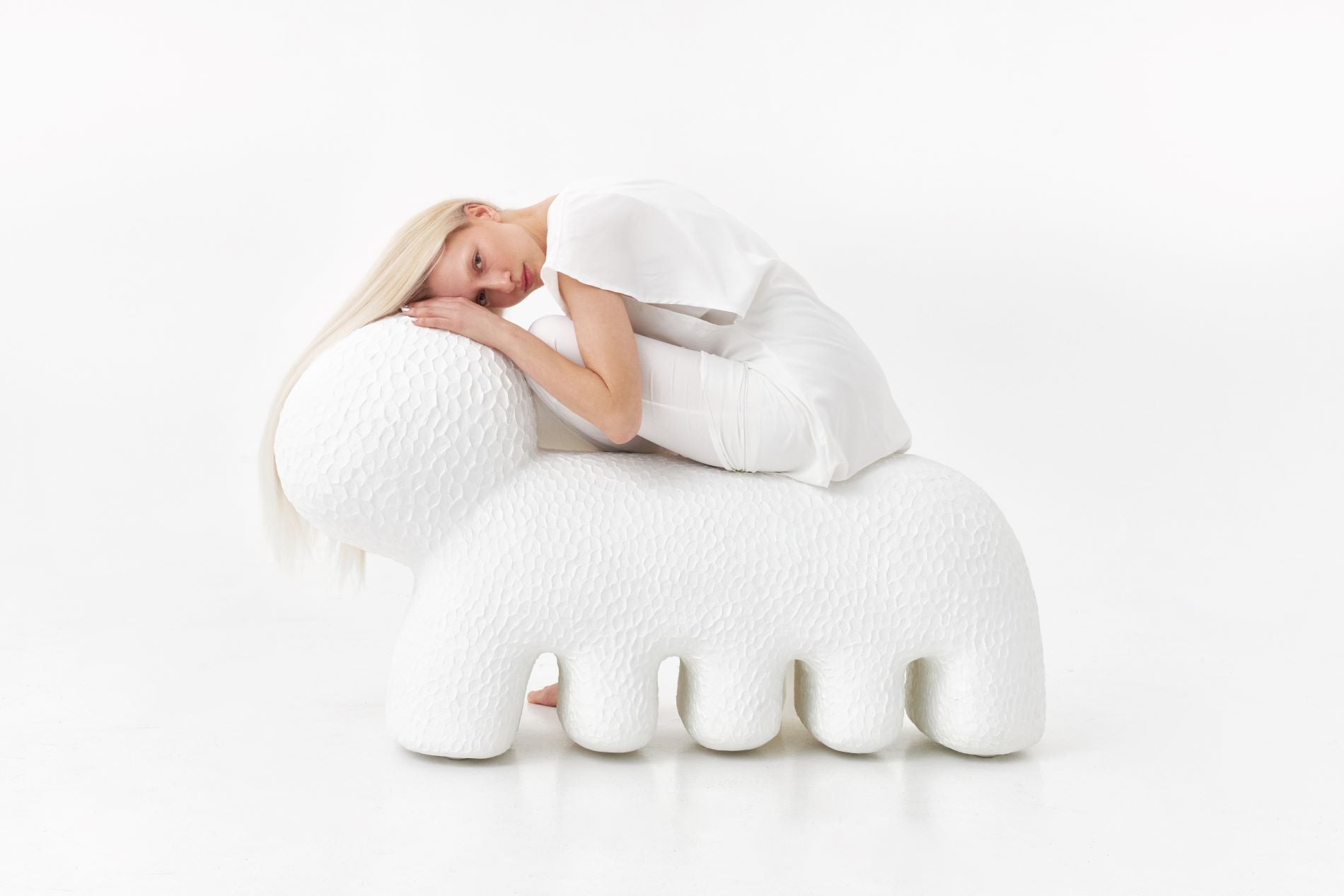PLYN armchair by Victoria Yakusha

Interior Design Trends 2025: What’s Coming In and What’s Going Out
PLYN armchair by Victoria Yakusha
The future of interior design is a fascinating blend of evolving aesthetics and functionality, shaped by upcoming interior design trends and sustainable innovation. In an era where interior spaces are reflections of lifestyle, following trends helps keep designs modern, comfortable, and aligned with current sensibilities. In 2025, interior aesthetics are set to embrace natural influences, innovative technology, and multifunctional design. This article explores the top interior design trends for modern homes in 2025, highlighting both what’s coming and what’s going.
Chapter 1: Main trends of interior design 2025
Organic materials and biophilic design
One of the main interior design trends of 2025 is the integration of biophilic design and natural materials, which reflects a larger shift toward eco-consciousness. Biophilic interiors aim to create indoor spaces that feel like natural sanctuaries by incorporating live plants, daylight, and sustainable materials. Whether in a modern high-rise or a suburban home, this trend emphasizes sustainable trends in interior design by utilizing materials like reclaimed wood, natural stone, and eco-friendly textiles, all while creating a peaceful environment.
SLUCHACH lamp by Victoria Yakusha

SLUCHACH lamp by Victoria Yakusha
Earthy and muted colour palettes
Interior design forecast for 2025 shows a move toward warmer, muted colors. Shades such as terracotta, deep greens, and soft creams enhance a sense of tranquility. For instance, one 2025 interior trend seen in recent remodels is a shift from white walls to tones inspired by nature, giving spaces a grounded, calming effect.
Multifunctional spaces
As the lines between home, office, and leisure continue to blur, multifunctional spaces have become a staple in contemporary design trends. Predicting interior design trends for the next year, we see a rise in modular furniture and convertible rooms, maximizing both space and functionality. This concept is not only practical but offers flexibility, accommodating changing needs and making spaces more versatile.
Curved and sculptural furniture
Interior aesthetics for 2025 feature sculptural, curved furniture that creates softer, more inviting environments. Unlike traditional furniture designs, curved sofas, rounded tables, and organically shaped chairs bring warmth and balance to interior spaces. This design innovation in 2025 evokes a feeling of flow and harmony, perfect for achieving a unique look in a home or office setting.
ZTISTA chairs, SONIAH lamp by Victoria Yakusha

ZTISTA chairs, SONIAH lamp by Victoria Yakusha
Chapter 2: What to expect: new trends
AI-powered personalization and smart homes
Technological advancements in interior design for 2025 are enhancing personalization like never before. AI-driven designs can tailor spaces to individual needs, analyzing data to recommend layouts, lighting, and even daily scheduling. Smart home systems are increasingly intuitive, connecting all aspects of home life to optimize comfort and functionality. A trendsetter in modern interior design, AI personalization creates seamless interaction with one’s environment, enhancing daily life through tailored comfort and efficiency.
Sustainable innovation in materials
Sustainable trends in interior design in 2025 are introducing bio-based materials like algae fabric and mushroom leather into the mainstream. These eco-friendly materials not only reduce environmental impact but also redefine interior aesthetics with textures and colors that bring a natural touch to indoor environments. Many designers are incorporating these innovations, such as mycelium panels and plant-based resins, to create modern, eco-conscious spaces.
Minimalist maximalism
Striking a balance between minimalism and maximalism, minimalist maximalism is about carefully selecting statement pieces that bring personality and creativity to a minimalist design. As one of the upcoming interior design trends for 2025, it encourages homeowners to display meaningful items while maintaining a clean, organized aesthetic. This trend can be seen in contemporary design by mixing bold art pieces or unique sculptures within open, minimalist spaces.
Soundscaping and acoustic solutions
Another design innovation anticipated in 2025 is soundscaping, which prioritizes the auditory environment of a space, addressing noise pollution and enhancing comfort. Acoustic panels, sound-absorbing materials, and white-noise machines are becoming integral to both commercial and residential design. In cities where noise pollution is prevalent, soundscaping is becoming a sought-after addition to interiors.
PLYN armchair, SONIAH lamp by Victoria Yakusha

PLYN armchair, SONIAH lamp by Victoria Yakusha
Chapter 3: What's going out of fashion
Fast furniture
The trend of fast furniture is quickly losing appeal, replaced by a preference for durable, sustainable pieces. This shift reflects a growing desire for quality over quantity in home furnishings and the increasing awareness of environmental impact. Expect to see a focus on furniture made from sustainable materials that lasts longer, reducing waste and promoting more responsible consumption.
All-white interiors
Once a symbol of modernity, all-white interiors are being replaced by warmer, earth-toned palettes. The trend away from stark, whitewashed rooms is largely driven by a desire for more warmth and depth in interior spaces. In recent years, designers have started using textured materials and layered tones to add a more personal, welcoming touch to rooms that were once entirely white.
Industrial aesthetic
While the industrial look—marked by exposed brick, metals, and unfinished textures—was once a popular interior choice, it’s now being swapped for more refined styles. This shift is a response to a demand for softer, more polished aesthetics that make spaces feel inviting. In many remodels, designers are choosing to keep subtle industrial accents while introducing more comfort-focused features, like soft fabrics and rounded shapes.
Interior by Victoria Yakusha: detais

Interior by Victoria Yakusha: detais
Chapter 4: How to incorporate trends into your own space
Start with subtle updates
Integrating upcoming design trends doesn’t always require a complete overhaul. Simple updates, like adding biophilic touches with plants or choosing new color palettes, can transform your space without overwhelming your original style. These subtle additions allow you to experience the interior design trends of 2025 while maintaining elements that are uniquely yours.
Embrace personalization
Using AI-powered personalization and smart home technology, you can design spaces to fit your daily routines and preferences. Automated lighting, customized climate control, and furniture adapted to your lifestyle offer convenience and a tailored experience in your home.
Using the live minimalism philosophy, designing spaces that fit daily routines also means incorporating personal artifacts or meaningful items that tell stories about you. Family heirlooms, collected art pieces, or cherished objects can add depth and warmth to minimalistic interiors, making them both functional and filled with personal energy. These details don’t clutter the space but rather enrich it, bridging the efficiency of minimalism with the warmth of a truly lived-in home.
Opt for sustainable choices
Sustainable design choices add enduring value to interiors, from eco-friendly materials to furniture crafted for longevity. Choose pieces made from recycled materials, or repurpose existing furniture, aligning your home with the sustainable trends in interior design 2025 while contributing to a cleaner environment.
Balance trends with your style
Trends come and go, but your style remains. Balance new trends with personal preferences by selectively adding elements that enhance your existing space. Curved furniture, for example, can soften a minimalist room, while earthy tones can bring warmth to a modern, white-walled space.
You may also like

Animism in Design: Creating Meaningful Emotiona...
LEARN MORE
What Is “Living Minimalism” in Contemporary Des...
LEARN MORE
Creating Sustainable Interior Design
LEARN MORE
Miami’s Creative Scene: Exploring the Best in P...
LEARN MORE
Luxury Interior Design Trends 2025: Tips to Rev...
LEARN MORE
Women Designers: Revolutionizing Creativity and...
LEARN MORE
Animism in Design: Creating Meaningful Connecti...
LEARN MORE
Sustainable Simplicity: Embracing Live Minimali...
LEARN MORE
What Is “Living Minimalism” in Contemporary Des...
LEARN MORE
Creating Sustainable Interior Design
LEARN MORE
What Is “Living Minimalism” in Contemporary Des...
LEARN MORE
Miami’s Creative Scene: Exploring the Best in P...
LEARN MORE
Functional Sculptures: Decorative Designer Piec...
LEARN MORE
Luxury Interior Design Trends 2025: Tips to Rev...
LEARN MORE
Animism in Design: Creating Meaningful Emotiona...
LEARN MORE
What Is “Living Minimalism” in Contemporary Des...
LEARN MORE
10 Years of FAINA: A Decade of Cultural and Sus...
LEARN MORE
Creating Sustainable Interior Design
LEARN MORE
Functional Art Furniture: Top 5 Unique Designs ...
LEARN MORE
Miami’s Creative Scene: Exploring the Best in P...
LEARN MORE
Luxury Interior Design Trends 2025: Tips to Rev...
LEARN MORE
Women Designers: Revolutionizing Creativity and...
LEARN MORE
Animism in Design: Creating Meaningful Connecti...
LEARN MORE
Sustainable Simplicity: Embracing Live Minimali...
LEARN MORE
“Land of Light” by Victoria Yakusha Featured at...
LEARN MOREInterior by Victoria Yakusha

Interior by Victoria Yakusha
Conclusion
The interior design forecast for 2025 brings exciting new ideas and sustainable practices to the forefront. With trends focusing on personalization, sustainable innovation, and functional aesthetics, 2025’s interior design landscape is dynamic and inspiring. By following these trends, you can create spaces that are not only beautiful but also perfectly aligned with your lifestyle and values.